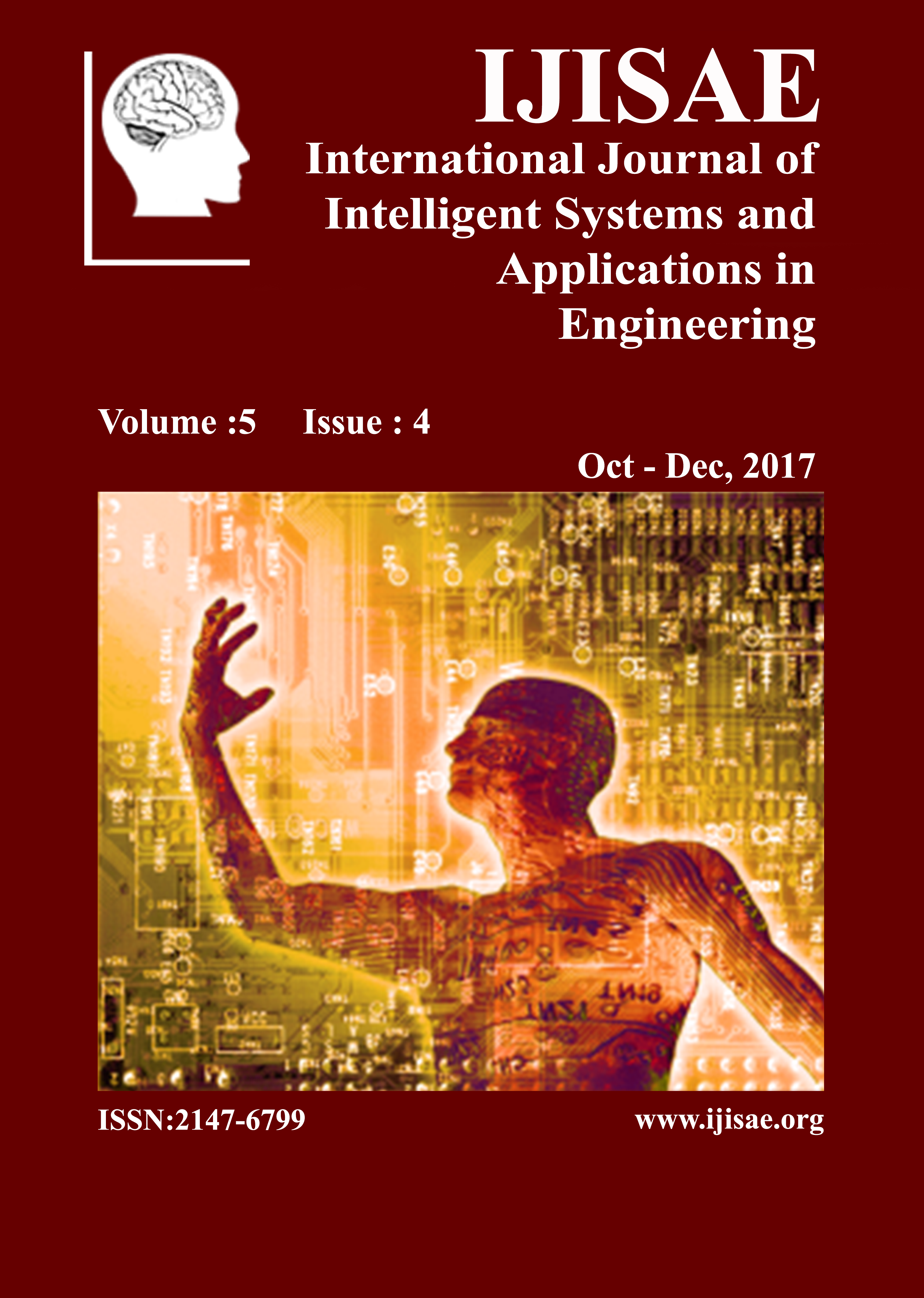Detection of PCB Soldering Defects using Template Based Image Processing Method
DOI:
https://doi.org/10.18201/ijisae.2017534388Keywords:
Printed circuit board (PCB), soldering defects, template based inspection, solder joint inspectionAbstract
In this study, a predefined template-based image processing system is proposed to automatically detect of PCB soldering defects that negatively affect circuit operation. The proposed system consists of a prototype, a camera, an image processing method and inspect process. The prototype is produced using a plastic material, depending on the focal length of the camera and the PCB size. Image processing step comprises two steps. Firstly, solder joints are determined using Fuzzy C-means clustering algorithm. Then, the center of each joint is determined. In the next step, a joint template is created that contains solder joints information. This joint template contains information about the effects of touching other joints for each joint. In this way, the inspection of soldering defects is getting shorter. Finally, each joint is only inspected for the joints specified in the template. The proposed method is evaluated on 85 real PCB image with 4250 soldering joints.Downloads
References
F. Wu and X. Zhang, “An inspection and classification method for chip solder joints using color grads and Boolean rules,” Robotics and Computer-Integrated Manufacturing, vol. 30, no. 5, pp. 517–526, 2014.
S. K. Bhat, R. Deshpande, P. Beck, S. Hegde, Y. S. Upadhyaya, and C. K. Ghosh, “Study on effect of thermo-structural loading on the PCB during Selective Soldering process using finite element method,” 2016 International Conference on Electronics Packaging (ICEP), 2016.
W.-Y. Wu, M.-J. J. Wang, and C.-M. Liu, “Automated inspection of printed circuit boards through machine vision,” Computers in Industry, vol. 28, no. 2, pp. 103–111, 1996.
N. Cai, J. Lin, Q. Ye, H. Wang, S. Weng, and B. W.-K. Ling, “A New IC Solder Joint Inspection Method for an Automatic Optical Inspection System Based on an Improved Visual Background Extraction Algorithm,” IEEE Transactions on Components, Packaging and Manufacturing Technology, vol. 6, no. 1, pp. 161–172, 2016.
C. Benedek, O. Krammer, M. Janoczki, and L. Jakab, “Solder Paste Scooping Detection by Multilevel Visual Inspection of Printed Circuit Boards,” IEEE Transactions on Industrial Electronics, vol. 60, no. 6, pp. 2318–2331, 2013..
J. A. Garcia-Pulido, G. Pajares, S. Dormido, and J. M. de la Cruz, “Recognition of a landing platform for unmanned aerial vehicles by using computer vision-based techniques,” Expert Systems with Applications, vol. 76, pp. 152-165, 2017.
C. Szegedy, V. Vanhoucke, S. Ioffe, J. Shlens, and Z. Wojna, “Rethinking the Inception Architecture for Computer Vision,” 2016 IEEE Conference on Computer Vision and Pattern Recognition (CVPR), 2016.
J. Pont-Tuset, P. Arbelaez, J. T.barron, F. Marques, and J. Malik, “Multiscale Combinatorial Grouping for Image Segmentation and Object Proposal Generation,” IEEE Transactions on Pattern Analysis and Machine Intelligence, vol. 39, no. 1, pp. 128–140, Jan. 2017.
F. Milletari, N. Navab, and S.-A. Ahmadi, “V-Net: Fully Convolutional Neural Networks for Volumetric Medical Image Segmentation,” 2016 Fourth International Conference on 3D Vision (3DV), 2016.
P. Reitz, S. R. Zorn, S. H. Trimborn, and A. M. Trimborn, “A new, powerful technique to analyze single particle aerosol mass spectra using a combination of OPTICS and the fuzzy c-means algorithm,” Journal of Aerosol Science, vol. 98, pp. 1–14, 2016.
J. C. Dunn, “A Fuzzy Relative of the ISODATA Process and Its Use in Detecting Compact Well-Separated Clusters,” Journal of Cybernetics, vol. 3, no. 3, pp. 32–57, 1973.
J. Bezdek, “Corrections for “FCM: the fuzzy c-means clustering algorithm,”,” Computers & Geosciences, vol. 11, no. 5, p. 660, 1985.
C. Bai, D. Dhavale, and J. Sarkis, “Complex investment decisions using rough set and fuzzy c-means: An example of investment in green supply chains,” European Journal of Operational Research, vol. 248, no. 2, pp. 507–521, 2016.
Downloads
Published
How to Cite
Issue
Section
License
All papers should be submitted electronically. All submitted manuscripts must be original work that is not under submission at another journal or under consideration for publication in another form, such as a monograph or chapter of a book. Authors of submitted papers are obligated not to submit their paper for publication elsewhere until an editorial decision is rendered on their submission. Further, authors of accepted papers are prohibited from publishing the results in other publications that appear before the paper is published in the Journal unless they receive approval for doing so from the Editor-In-Chief.
IJISAE open access articles are licensed under a Creative Commons Attribution-ShareAlike 4.0 International License. This license lets the audience to give appropriate credit, provide a link to the license, and indicate if changes were made and if they remix, transform, or build upon the material, they must distribute contributions under the same license as the original.










